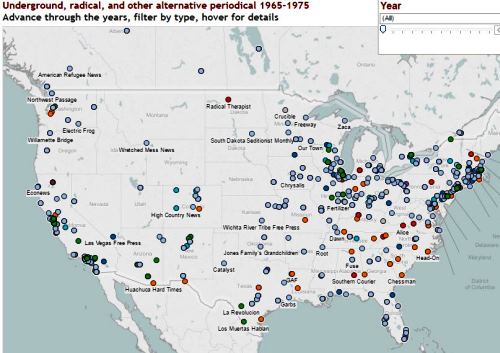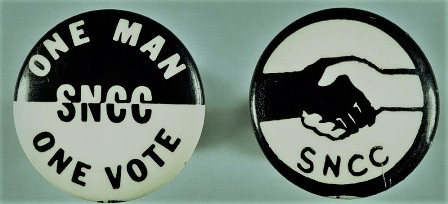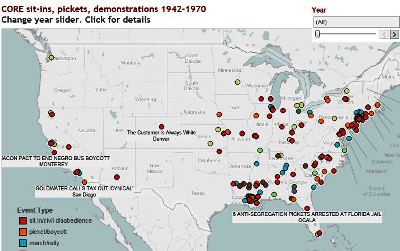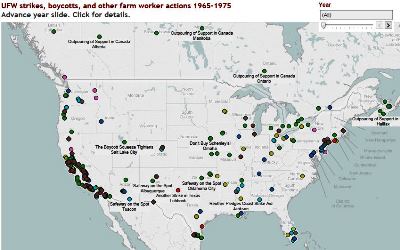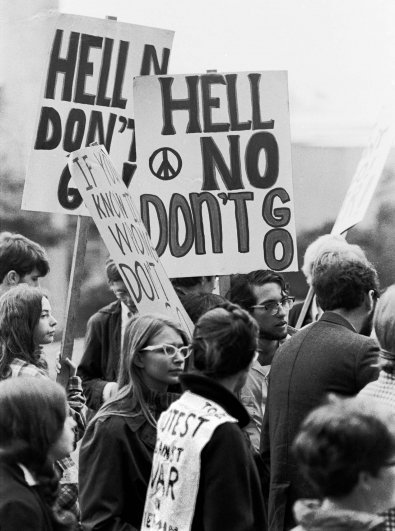 photo: (c)Fred Lonidier
photo: (c)Fred Lonidier
The social movements of 1960s and 1970s triggered transformations that have resonated for more than half a century. Black freedom movements and uprisings, women's liberation, gay liberation, Native American, Chicano, and Asian American struggles yielded profound legal and cultural changes, effectively rewriting the rules of race, gender, and sexuality. Antiwar and countercultural activism by millions of young people of every backgound turned campuses and cities into both battle grounds and zones of social and cultural innovation while helping to bring down two presidents and rearranging both the Democratic and Republican Parties. The impact of these movements registered widely: in the military which had to be redesigned to operate without conscription; in mass media which scrambled to recapture a generation that had discovered underground newspapers; and especially in the new ways that many Americans would from then on view their nation's institutions and role in the world.
In other sections of this project we explore the scope of the Black Freedom Movements, Chicanx movements, and women's movements. Here we concentrate on antiwar and New Left movements with (1) a timeline and maps that track nearly 900 marches and demonstrations involving millions of protesters from 1963-1975; (2) interactive maps and lists that show the reach of the antiwar movement in May 1970 when strikes were declared on more than 650 campuses; (3) the expansion of SDS (Students for a Democratic Society) from 29 to more than 300 campuses; (4) the location of draft-resistance actions and 301 anti-draft organizations; (5) maps and lists of more than 700 GI Anti-militarist publications; (6) names and locations 2,600 underground and alternative newspapers.
Amanda Miller coordinates this section of the Mapping American Social Movements Project. Additional research and data development by Katie Anastas and James Lewes.
|
Here we map and show a timeline of 884 important protests involving tens of millions Americans. We have categorized the type of event and you can filter by reports of arrests, vandalism, and violence (including five fiery self-immolations). This is only a subset of all the protests in this era. Our data include only the best publicized actions, the ones covered in a selection of major newspapers.
|
|
The May 1970 antiwar strikes comprised one of the largest coordinated sequences of disruptive protests in American history, with walkouts spreading across more than 700 campuses involving hundreds of thousands of students. This followed the news of a secret invasion of Cambodia and days later the massacre of unarmed students at Kent State.
|
|
The Students for a Democratic Society (SDS) was one the most influential radical organizations of the 1960s and remains closely associated with the term "New Left." Founded in 1960, the organization took on a new mission after the Johnson administration escalated the war in Vietnam, launching a campaign of antiwar actions. Here we map the expansion of SDS chapters from 11 in 1962 to more than 300 by early 1969
|
|
Millions of young men found ways to avoid conscription during the Vietnam war. Others, women as well as men, committed themselves to openly resisting the draft. They burned or surrendered draft cards, refused induction, and staged disruptive protests at draft boards and induction centers, employing in some cases tactics of peaceful civil disobedience, in other cases damaging property and battling with police. Here we map draft resistance actions that received publicity in major newspapers in the years between 1965 and 1972.
|
|
Based on data assembled by James Lewes, these maps and charts locate 768 periodicals associated with the GI antimilitarist movement in the era of Vietnam war. By 1970, antiwar periodicals for GIs were available near most military bases in the US and at bases in Europe and Asia, especially in West Germany and Japan.
|
|
Here are five maps and charts showing the year-by year geography of the underground media system, locating the comings and goings of more than 2,600 weeklies and monthies. Filter by state and by categories, including African American, Chicana/o, GI antimilitarist, countercultural, radical left, and other descriptives. |
Additional 1960s and 1970s social movements
|
|
The Student Nonviolent Coordinating Committee was arguably the most dynamic and influential of the 1960s new left and civil rights era organizations. We map more than 500 SNCC sit-ins, boycotts, and other actions and explore our yearbook/ database of SNCC actions |
|
Founded by black and white students at the University of Chicago, the Congress of Racial Equality pioneered key tactics of the modern civil rights movement. Here we map more than 600 demonstrations organized by CORE and show the changing activist geography as the organization first attacked segregation in northern cities, then moved south sponsoring Freedom Rides and other forms of civil disobedience. |
|
Founded in Oakland, the Black Panther authorized only 12 additional chapters. Still the Party staged actions across a wider geography. Here are maps and timelines showing more than 500 BPP actions. In addition, we show in detail the six metropolitan areas where the Panthers enrolled that largest number of members and made the greatest impact: Oakland-SF Bay Area; New York; Chicago; Los Angeles; Seattle; Philadelphia. |
|
When ethnic Mexican farm workers led by Cesar Chavez joined with Filipino American workers led by Larry Itliong in 1965 to strike grape growers in Delano, California, the modern farm workers' movement was born. Here we map more than 1000 strike actions, boycotts, and other UFW related events showing the movement's support across the United States and Canada. |

 photo: (c)Fred Lonidier
photo: (c)Fred Lonidier